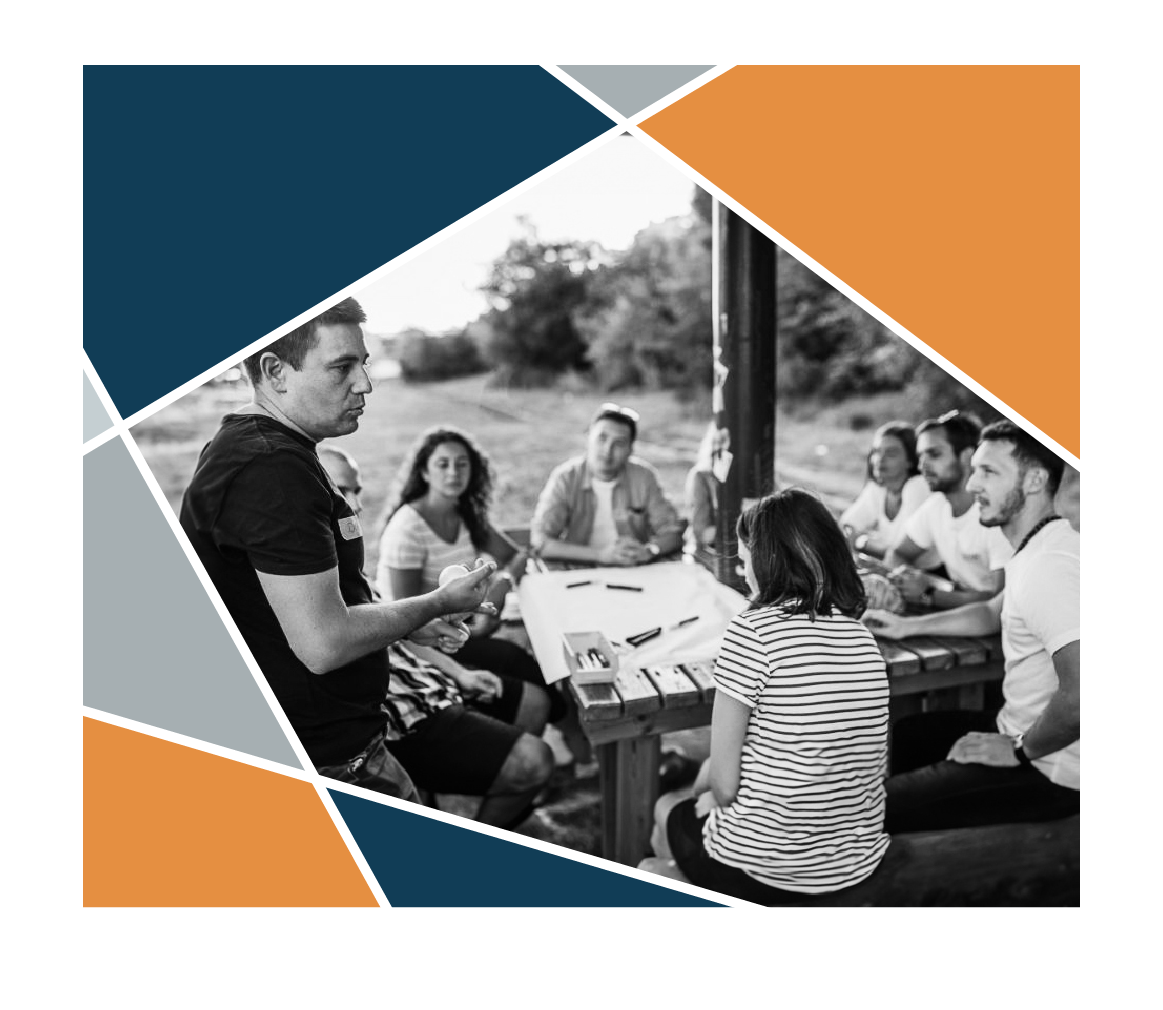SECTION 2
STORIES MATTER – THE ANATOMY OF A COMMUNITY
There are under-resourced neighborhoods in our communities. Many of these areas have been systematically disenfranchised and continue to experience the long-term effects of red-lining, ‘urban renewal,’ underinvestment in infrastructure and other systemic failures. It is right to acknowledge the disparity, but that doesn’t tell the whole story.
Looking at a community’s story means looking at the full picture through an asset lens instead of focusing on the deficits. This means that we can acknowledge the disinvestment, while also considering the rich history, relationships and resourcefulness that exists.

In a recent engagement with a housing nonprofit, residents noted this very tension. Their neighborhood has a historically poor reputation, with many news stories focused on the trauma and challenges of living there. While the challenges are certainly present, each resident spoke with pride about the sense of community, strong relationships, resilience, optimism and hard work that exists. They were proud of the network of resources they have cultivated.
Community Voice is the center of any neighborhood’s story and the heart of our lived experiences. It’s often been the silenced and forgotten voices for a community – where the knowledge-bearers reside – the true educators with the ability to map every detail.
‘Mapping’ a Community
To truly explore the stories and assets of a community, Next Stage follows a framework of discovery, research and exploration. We’ve instituted this process to learn more about under-resourced communities and to discover the true assets and voices of a neighborhood.

Here is the process we use:
Beyond the Survey: Consider Essential Assets
Rather than a survey, we create an asset inventory that outlines essential assets and strengths that already exist in a community or neighborhood. These benefits can consist of nonprofits, institutions like the public library, nearby schools and houses of worship, small businesses and community centers. We identify the already embedded and trusted institutions, providing resources and natural supports for residents.
Identify the Gatekeepers
The list of gatekeepers can be broad and expansive, especially initially. It can range from known to unknown contacts in several entities who may work or partner effectively in the community. Gatekeepers may include individuals or agencies that have social capital and manage specific areas of the city, existing service providers, or members of the community/neighborhood. These key sources are trusted and connected.
Individuals most proximate to the community can often be found within:
- Faith communities
- Nonprofit agencies already embedded in the community
- Neighborhood associations, community centers and advisory boards
- Neighborhood schools and PTOs
- Civic and community leaders
- Small business owners
- Longtime residents
But remember – communities are not a monolith. If you’ve talked to one person – you’ve talked to one person. It is important to connect with a range of gatekeepers. Make sure you’re speaking with both grasstops and grassroots leaders to get a full range of perspectives.
Do Your Research
In addition to speaking directly with stakeholders, do your research to better understand the data and perception of a community. Most cities have reports and data that are broken up by neighborhood or zip code. In Charlotte, where many of our clients work, this Quality of Life Explorer is a free, public tool we use to understand the housing, economic, environmental and safety conditions of a neighborhood. Other resources can include:
- City or state reports on specific issues such as education or housing
- Trend and academic research on specific topics
- A survey of media and news articles
- A review of nonprofit, faith community and business websites in the area
Make it a Group Effort
Consider who is already at work in the neighborhood and join forces accordingly. If neighborhoods desire a service or program, connect with existing partners and nonprofits to learn more about their work. A replication of services is often looked upon as unfavorable – not from a competitive standpoint, but from an experience or innovation perspective. Are there opportunities to work together and strengthen forces for a greater purpose and cause?
David Ehrilchman, author of Impact Networks, states, “To embrace the challenges of our time, we must embrace complexity and work collaboratively across systems of diverse stakeholders, even and especially when the path forward is unclear.”
01 |
How We Got Here: Systems in Crisis |
Care Ring Case Study |
03 |
